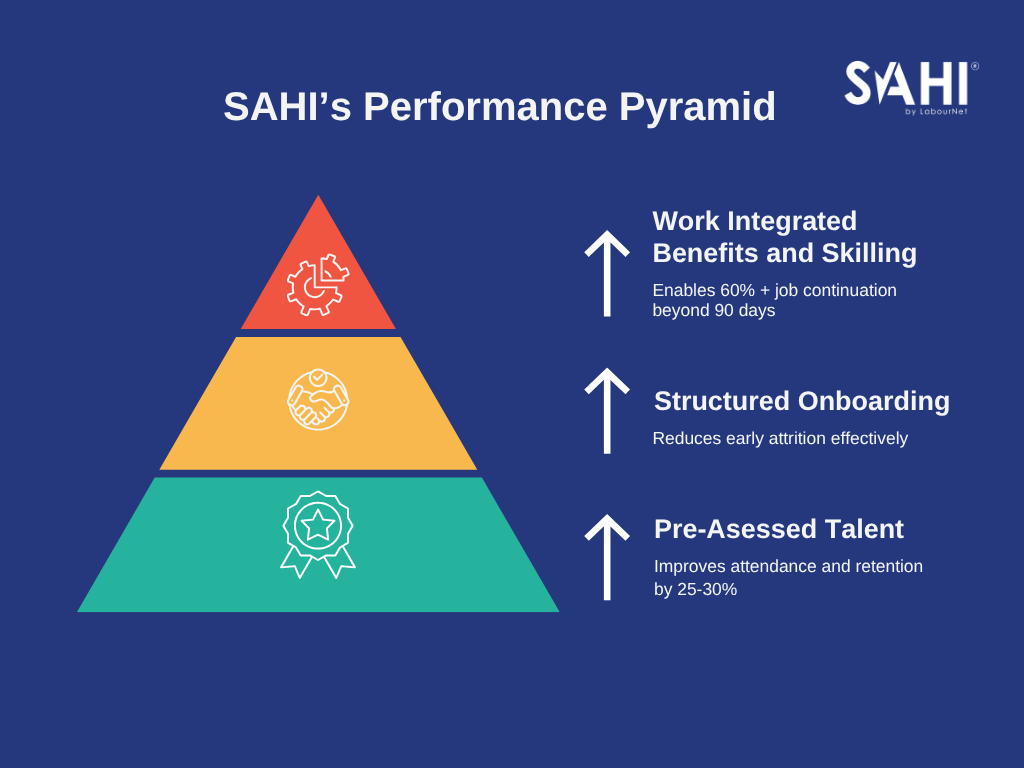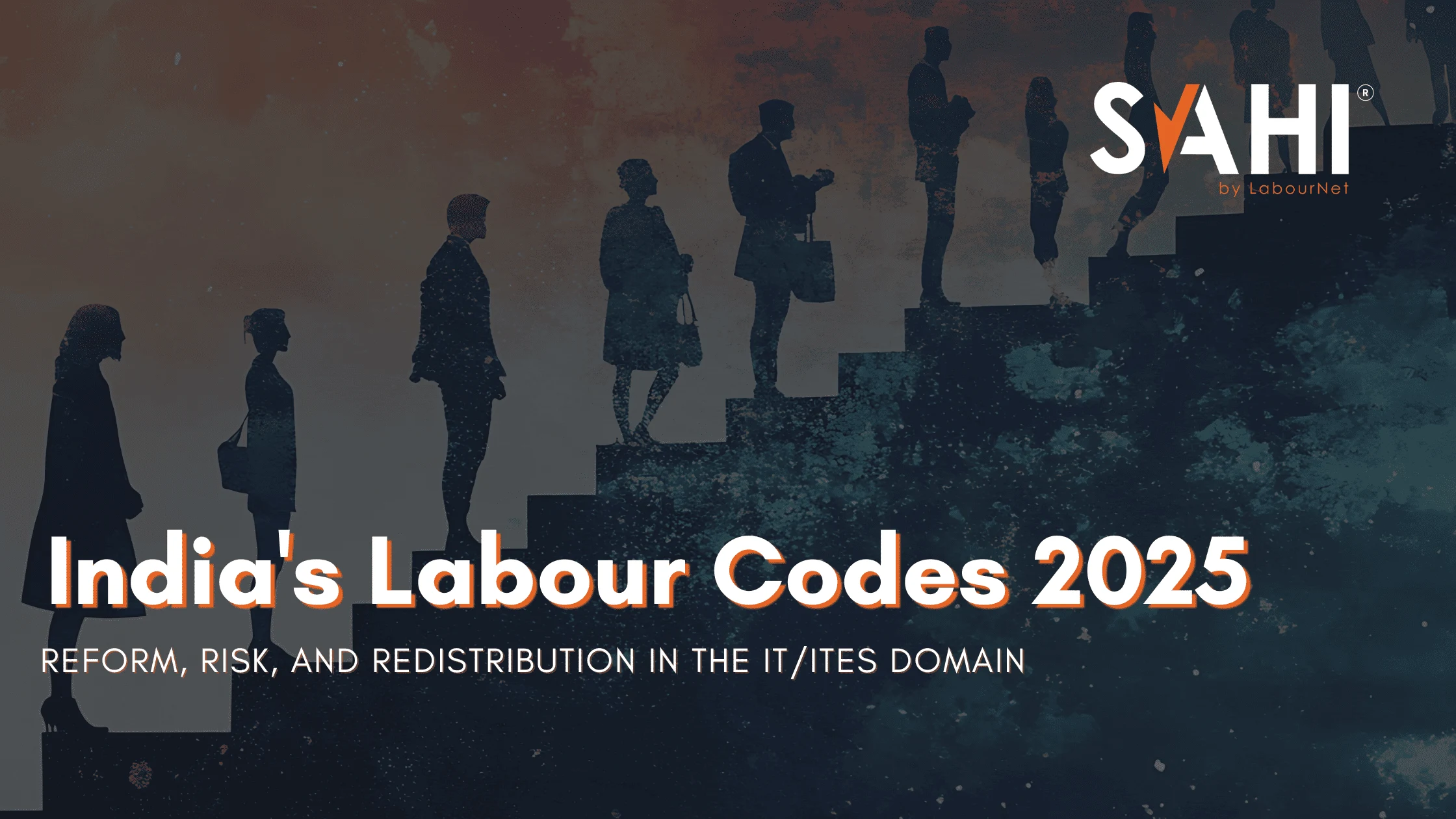Cracking the Absenteeism Code
Absenteeism is feedback—often the only kind that can’t be faked. Unlike performance reviews or engagement surveys, absence is a real, observable behavior. It’s not just a scheduling issue—it’s a signal. It can indicate discontent, disengagement, burnout, misalignment, or deeper systemic workforce challenges.
From factory floors to remote tech teams, rising absenteeism costs companies time, productivity, and morale. What’s often dismissed as laziness, family issues, or poor time management is, in reality, a symptom of breakdowns in how organizations hire, onboard, engage, and support their talent.
At SAHI, we’ve observed this pattern across industries: from Global Delivery Centers (GDCs) struggling to retain fresh tech talent, to large-scale manufacturing units grappling with post-festive no-shows. In most cases, absenteeism isn’t the disease—it’s the symptom.
It’s not just about someone not showing up. It’s often the workforce’s quiet protest—a signal that something is out of sync. When absenteeism rises, it’s our systems that need to listen better.
The Scale of the Problem
India:
- A 2024 SHRM report indicates 20–25% absenteeism in manufacturing-heavy clusters, especially in Tier 2 and Tier 3 cities.
- In gig and frontline sectors, weekly absence rates have risen by 15–20% post-COVID, driven by instability in job security, housing, and healthcare.
Global:
- According to Gallup’s State of the Global Workplace 2024, only 23% of employees are engaged. Disengagement directly correlates with absenteeism and attrition.
- The U.S. Bureau of Labor Statistics estimates absenteeism costs employers $2,660 per worker per year.
Why Are Workers Really Absent?
SAHI’s on-ground insights across IT, Manufacturing, Logistics, and Retail reveal some interesting insights:
a. Mismatch Between Job & Skill
SAHI has partnered with over 10,000 enterprises and trained or employed over
1 million workers across India. Here’s what our experience shows:
- Pre-Assessed Talent = Higher Show-Up Rates
Day-one attendance and 3-month retention improve by 25–30%. - Work-Integrated Benefits Are Game Changers
Our onboarding-led staffing model has enabled 60%+ job continuation beyond 90 days, particularly in IT/ITES roles. - Structured Onboarding Reduces Early Attrition
Career Growth = Commitment
Career pathway models (skill → place → upskill → promote) significantly improve motivation and retention. When workers see a future, they stay.
Many workers are placed in roles they’re not trained or prepared for—especially in IT, data support, and automation-adjacent jobs. This results in low confidence, underperformance, and ultimately, no-shows or dropouts.
b. Poor Onboarding & Integration
Structured onboarding is often overlooked, especially in high-volume hiring environments like GDCs or warehouses. This leads to poor clarity, weak belonging, and higher early attrition.
c. Workplace Friction & Compliance Gaps
Issues like delayed payments, missing documentation, or rigid HR policies create distrust and disengagement.
d. Life Factors: Housing, Health, Finance
Absenteeism often spikes when workers face housing insecurity, lack medical coverage, or are burdened with sudden expenses.
Insights from the Inside

SAHI Solves Absenteeism Proactively
“Absenteeism is not a productivity problem. It’s an alignment problem. Align skills with roles, aspirations with career paths, and work with life.”
— Ravi Venkatesan, Chairman, Global Energy Alliance for People and Planet
- a. Enterprise-Focused Solutions
- Hire for future readiness: Build pipelines of certified, upskilled, and role-fit talent—not just placements.
- Onboard with empathy: Use 3-day inductions, buddy systems, and digital HR touchpoints to build trust quickly.
- Invest in integrated skilling: Combine learning and working, especially in IT, logistics, and energy sectors.
- b. Policy-Level Interventions
- Make benefits portable and tied to gig/staffing jobs.
- Expand NAPS/NATS apprenticeships to improve job-readiness.
- Establish skilling hubs near large industrial zones.
Listen to the Silence
Absenteeism is silent feedback. Ignore it, and you lose productivity. Listen to it, and you gain insight into retention, engagement, and workforce health.
“At SAHI, we turn absenteeism into an insight tool. It helps us design better workforce solutions and more importantly, better lives.”
– SAHI by LabourNet



